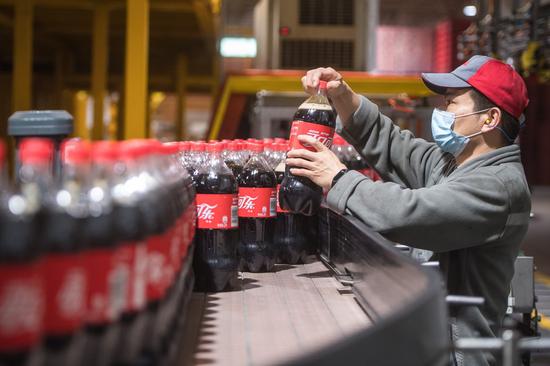Coca-Cola continues to expand investment in China supply chain

A man works at a production line of the Swire Coca-Cola Beverages Hubei Limited in Wuhan, central China's Hubei Province, March 24, 2020. (Xinhua/Xiao Yijiu)
Coca-Cola China and its bottling partners will continue to expand investment in local supply chains to improve efficiency, ensure supply, and serve domestic consumers' demand.
The beverage giant achieved good second-quarter results in the Chinese market, despite the impact of the COVID-19 epidemic, and continues to set up new factories and production lines in China to meet evolving consumer needs.
In the second half of 2020, Swire Coca-Cola, a bottler of Coca-Cola, plans to put six new production lines into operation, with a total investment of 250 million yuan (about 36 million U.S. dollars) and an additional annual output value exceeding 1.7 billion yuan.
Swire Coca-Cola also plans to add a plastic bottle production line to its plant in central China's Hubei Province, which is expected to go operational in May 2021.
In addition, COFCO Coca-Cola Beverages Ltd., another bottling partner of Coca-Cola, has started building its first factory in China's southwestern province of Guizhou.
With an estimated investment of 270 million yuan, the new facility, scheduled for operation by the end of 2021, will start with two advanced PET soda production lines with an annual capacity of 170,000 tonnes.
"We believe the second quarter will prove to be the most challenging of the year; however, we still have work to do," said James Quincey, chairman and CEO of the Coca-Cola Company, adding that the company will continue to adjust and accelerate its strategies in the fast-changing landscape.
Besides launching new production lines, the company has also accelerated digital transformation in China in the face of the surging demand for online shopping since the outbreak of the epidemic.
Coca-Cola China has been working closely with online shopping and services platforms such as Meituan Dianping and JD.com this year to tap the potential of online consumption.


